
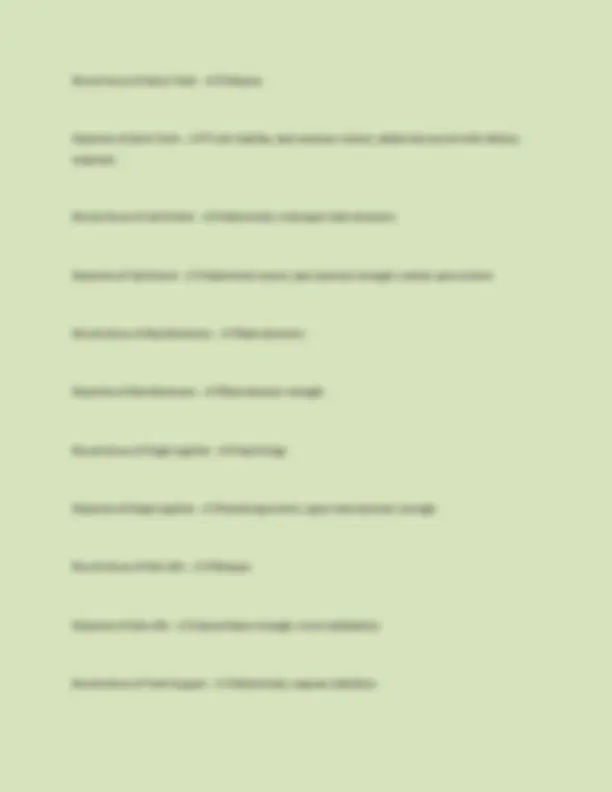
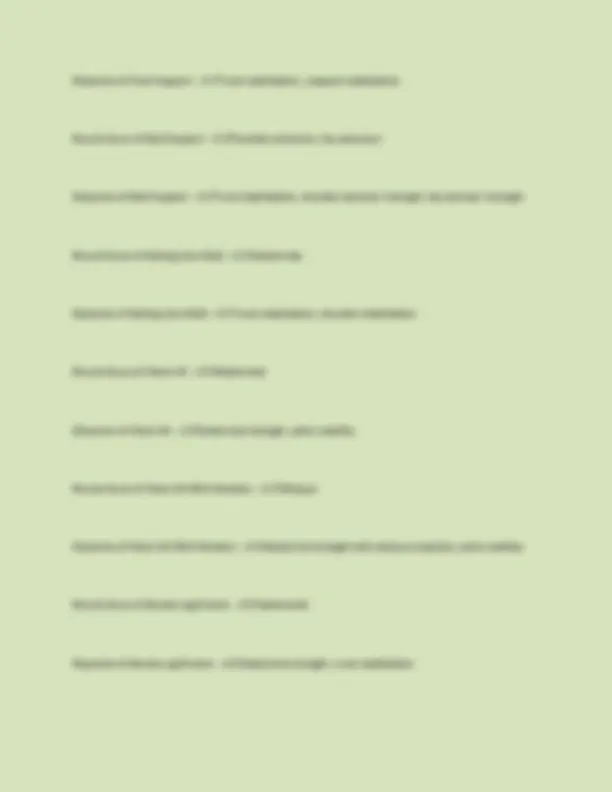
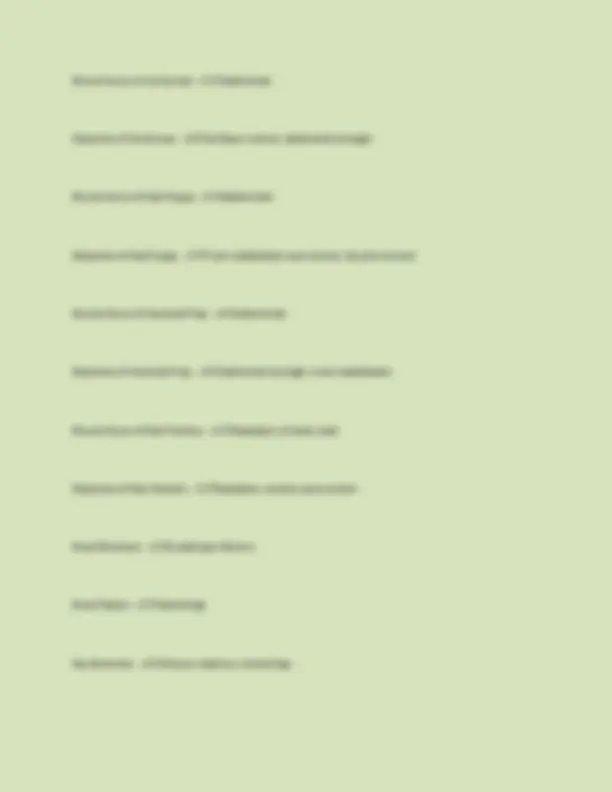
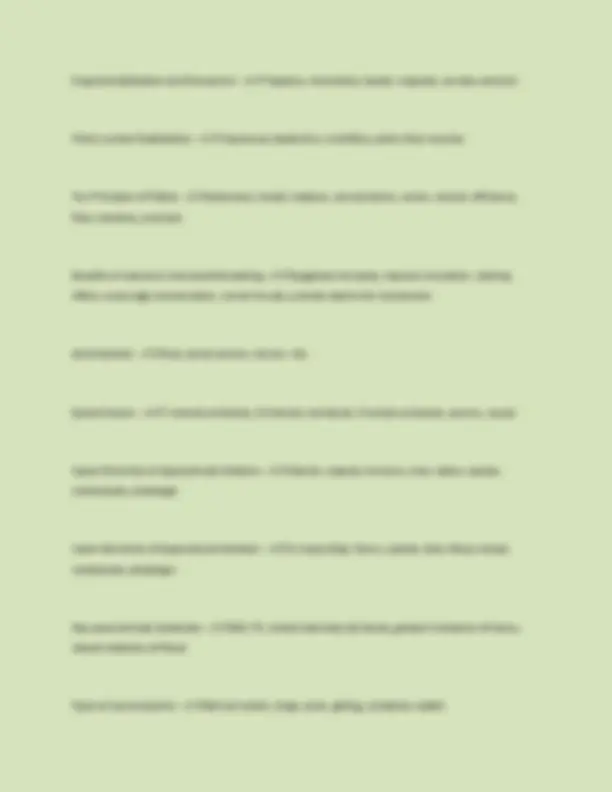
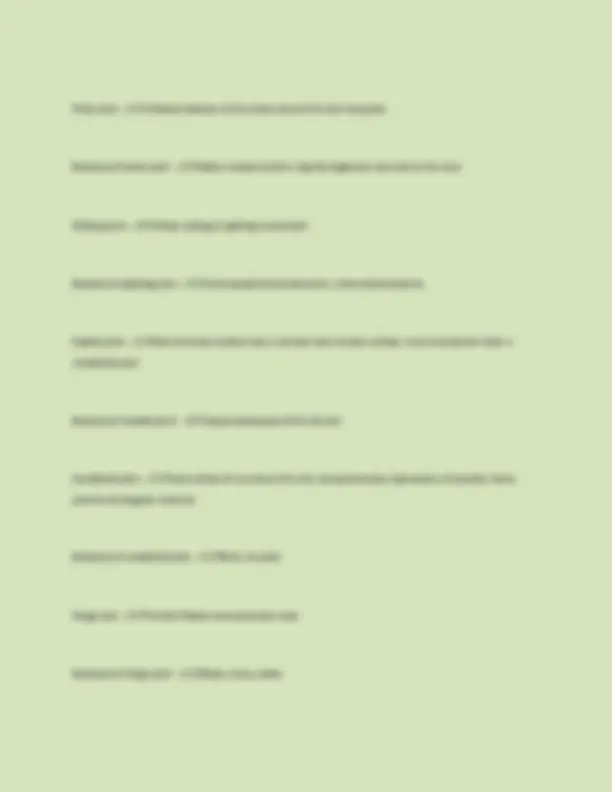
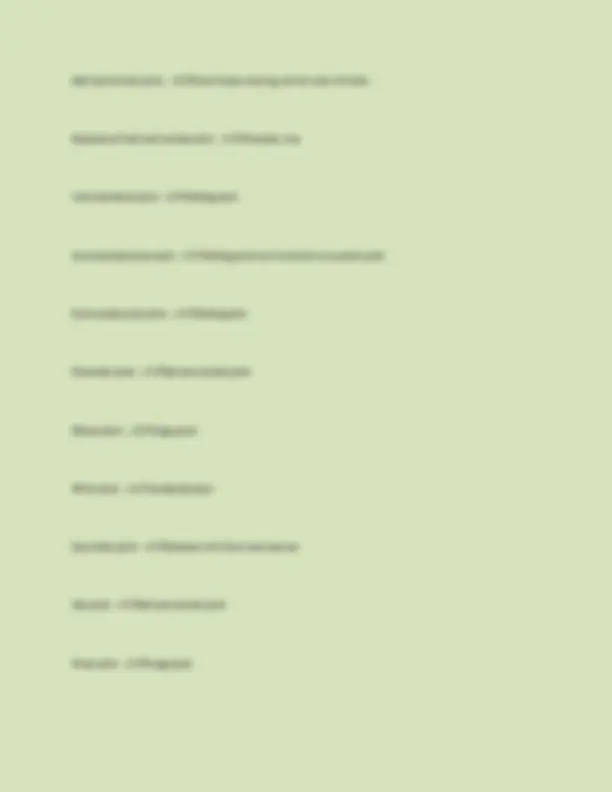
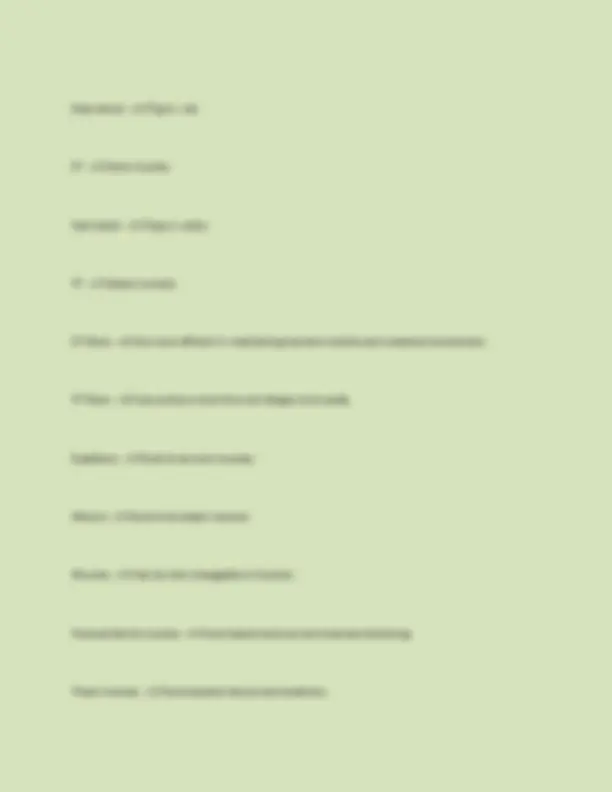
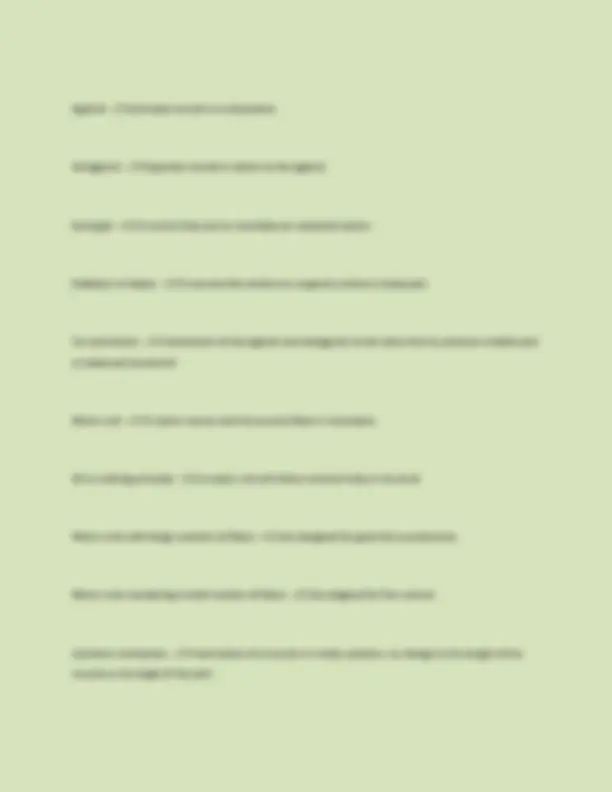
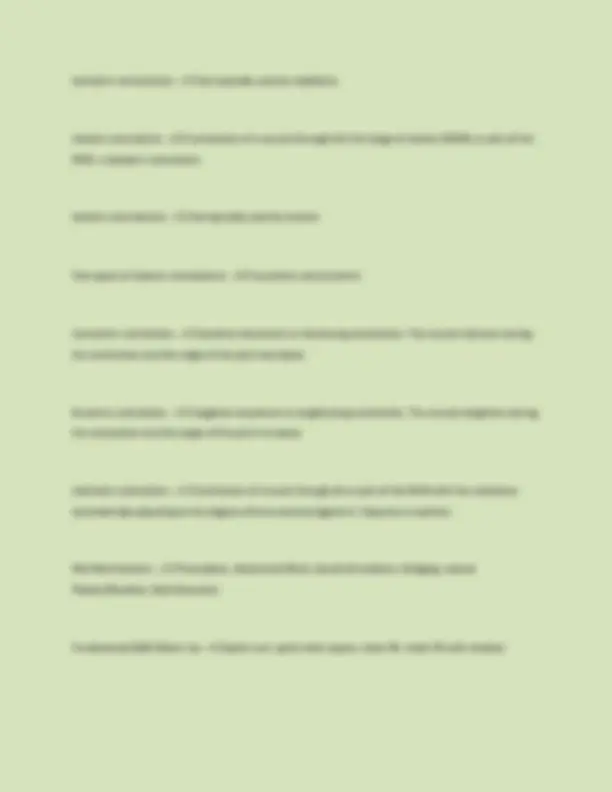
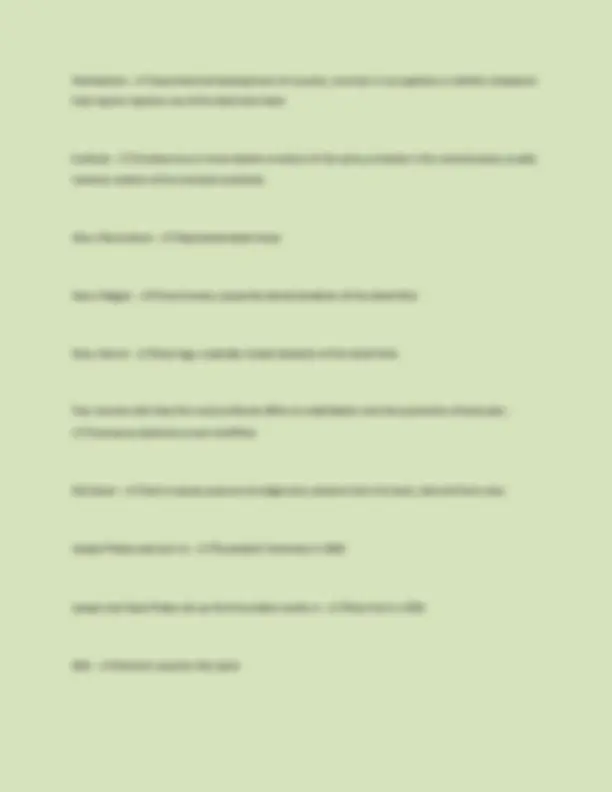
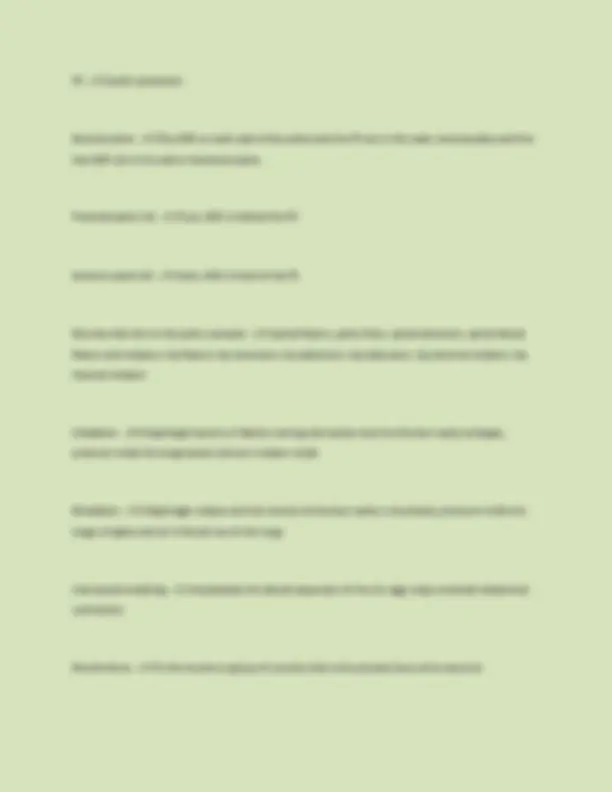
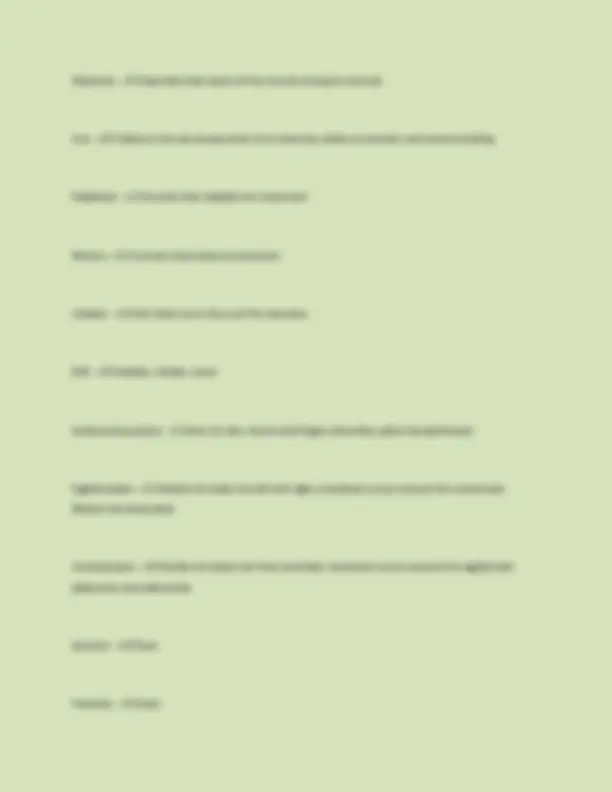
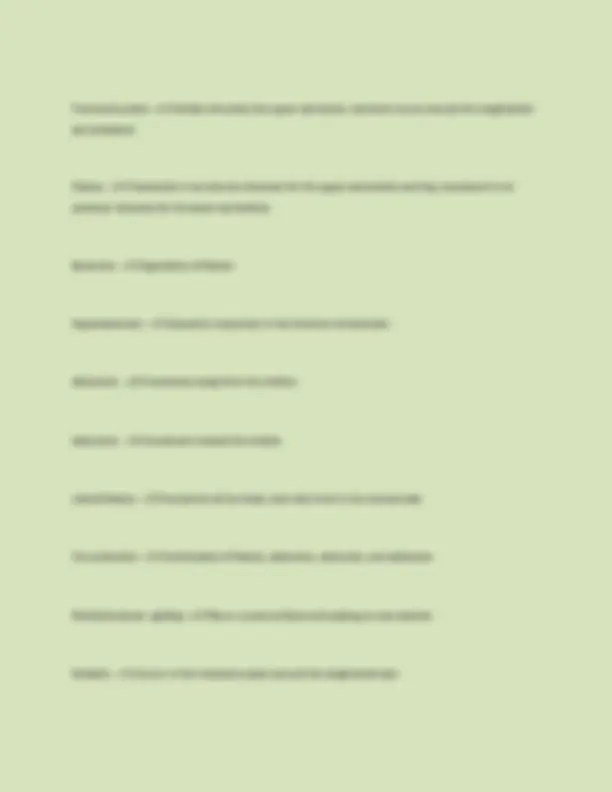
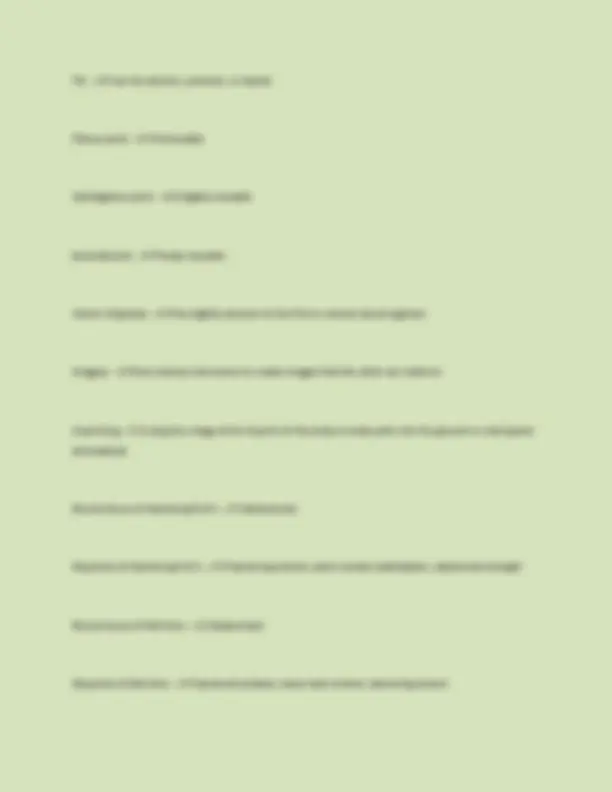
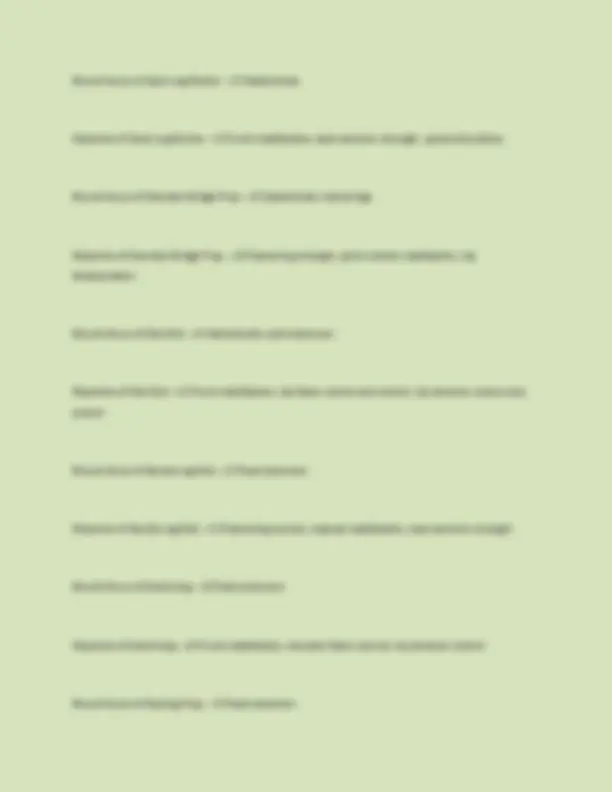
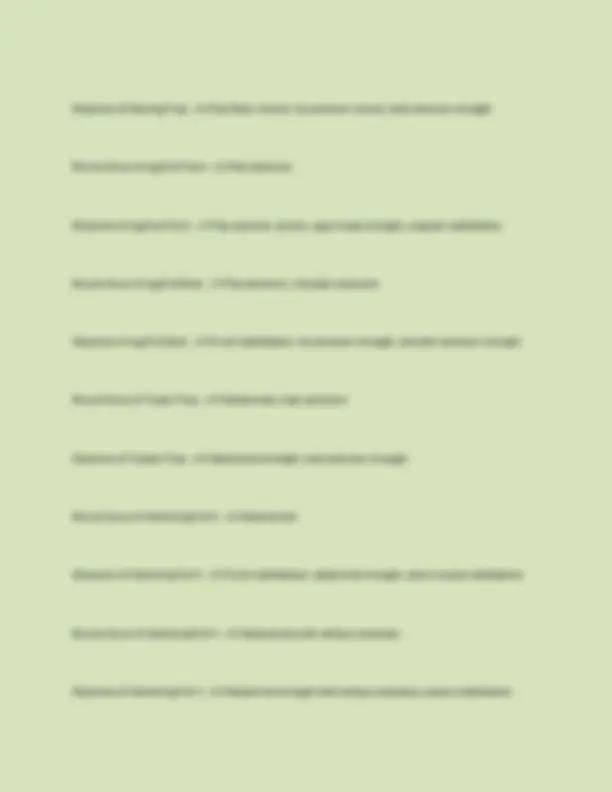
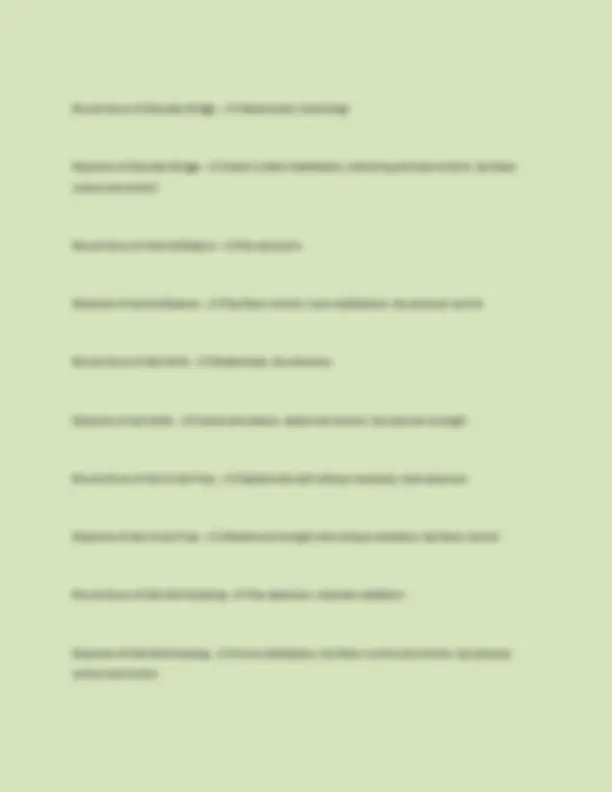
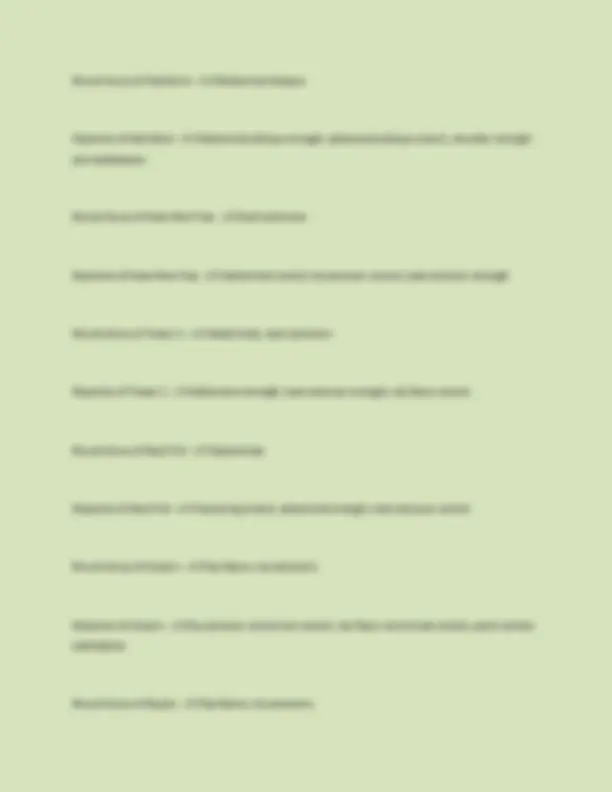
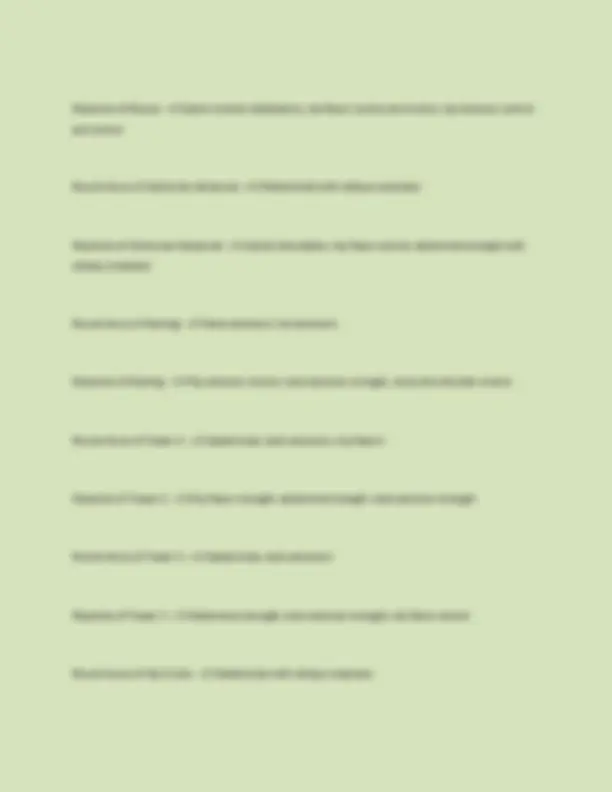
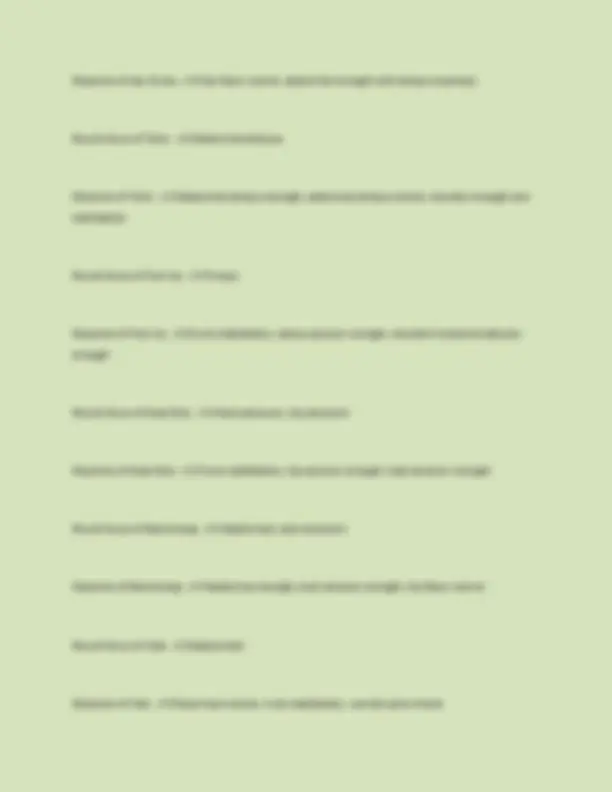
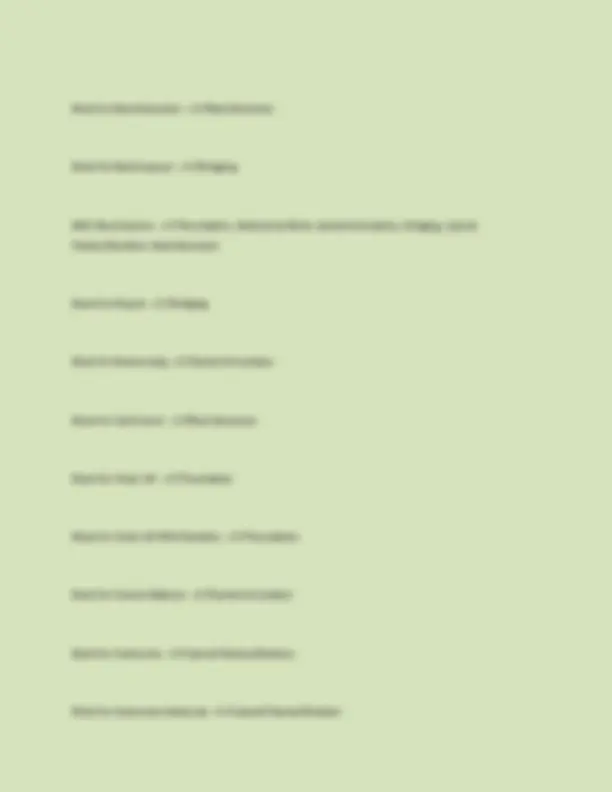
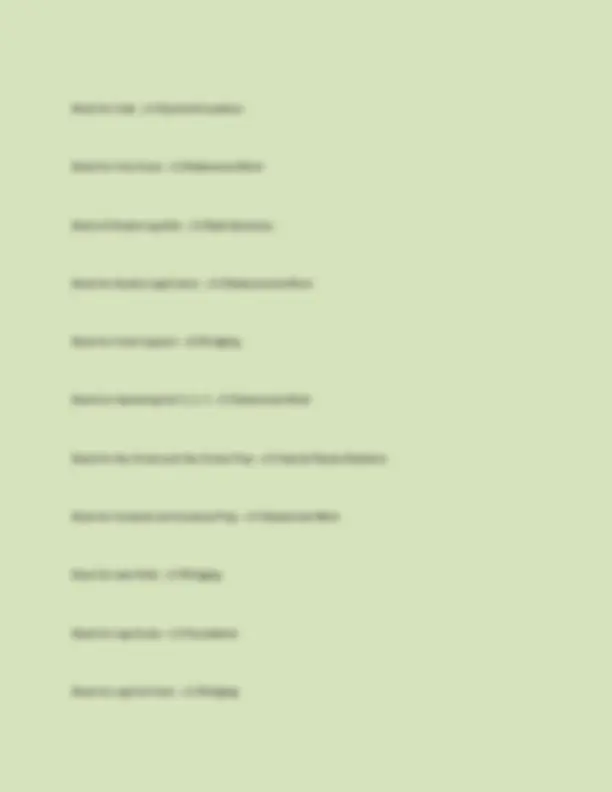
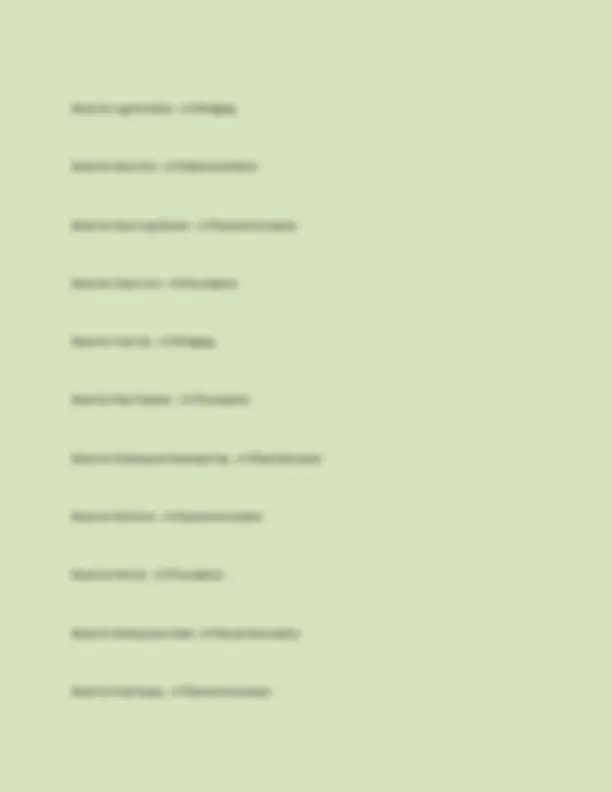
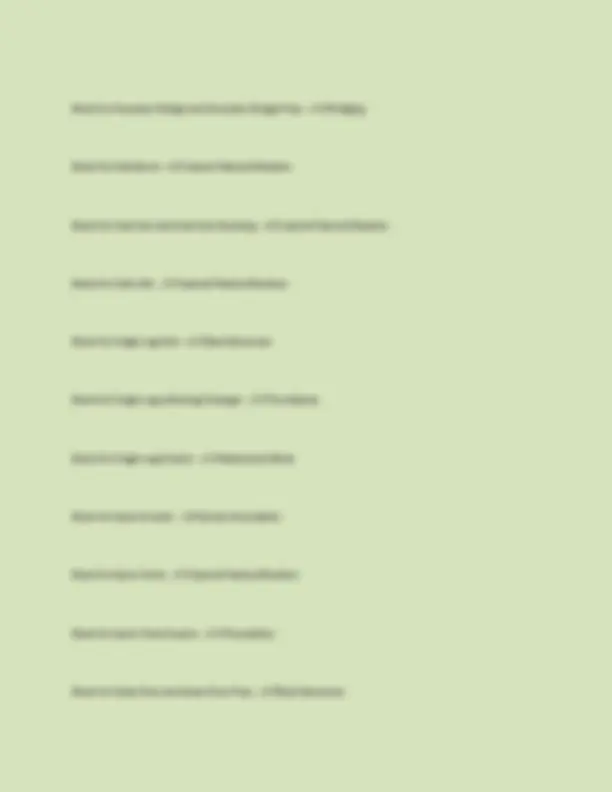
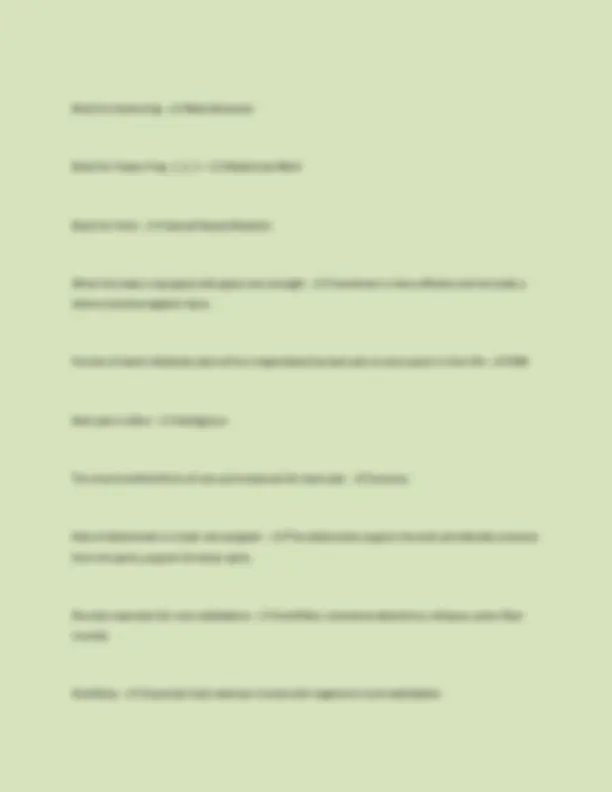
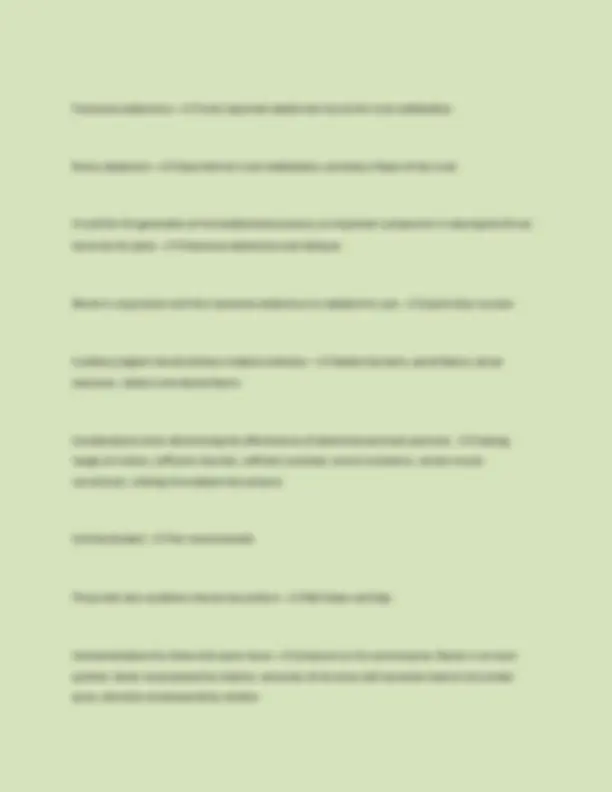
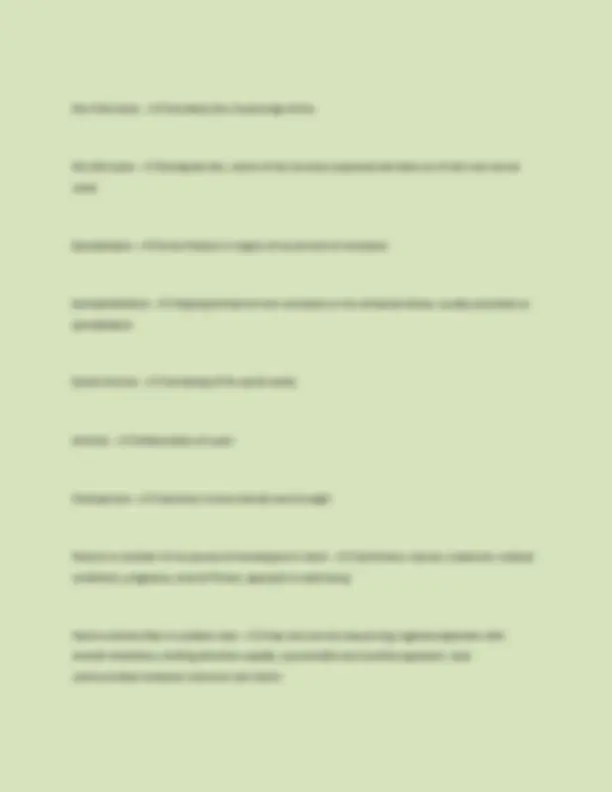
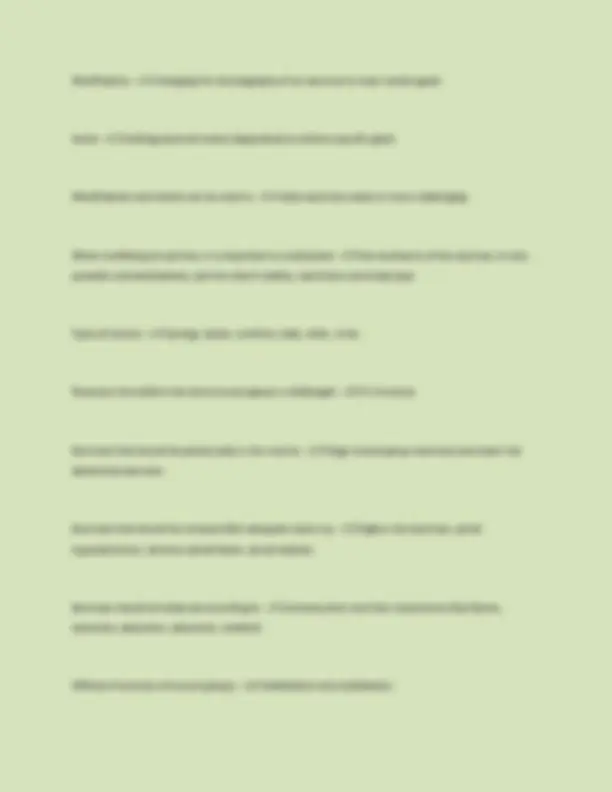
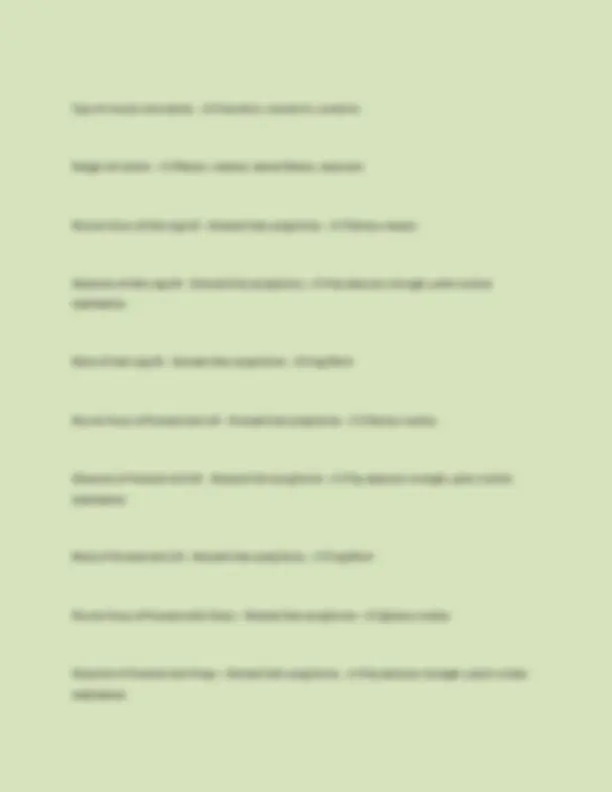
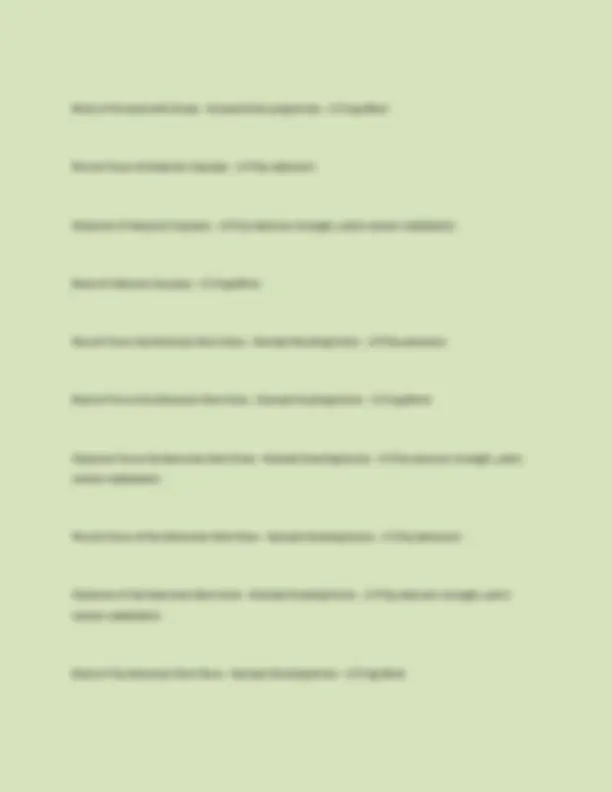
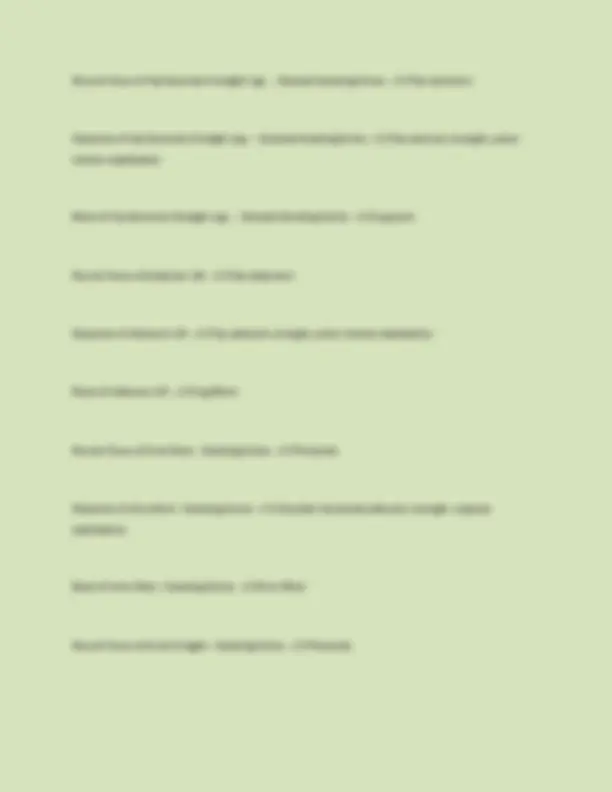
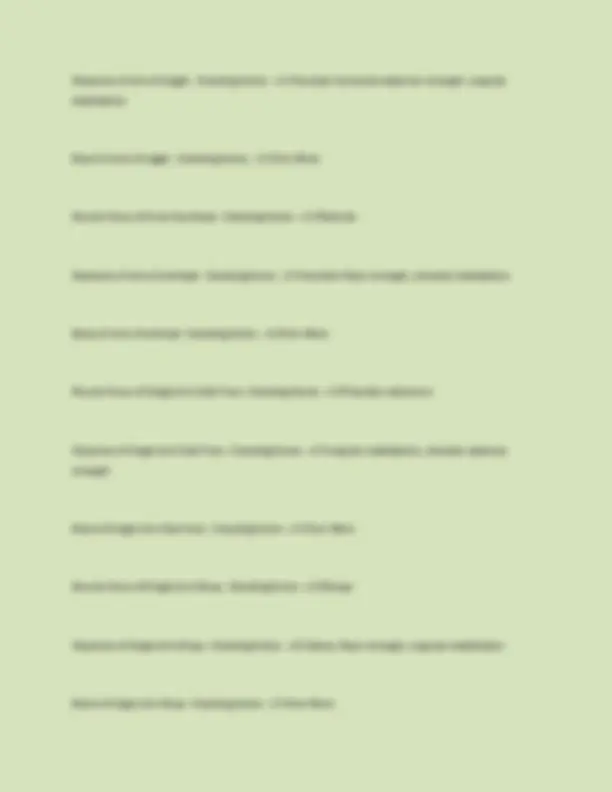
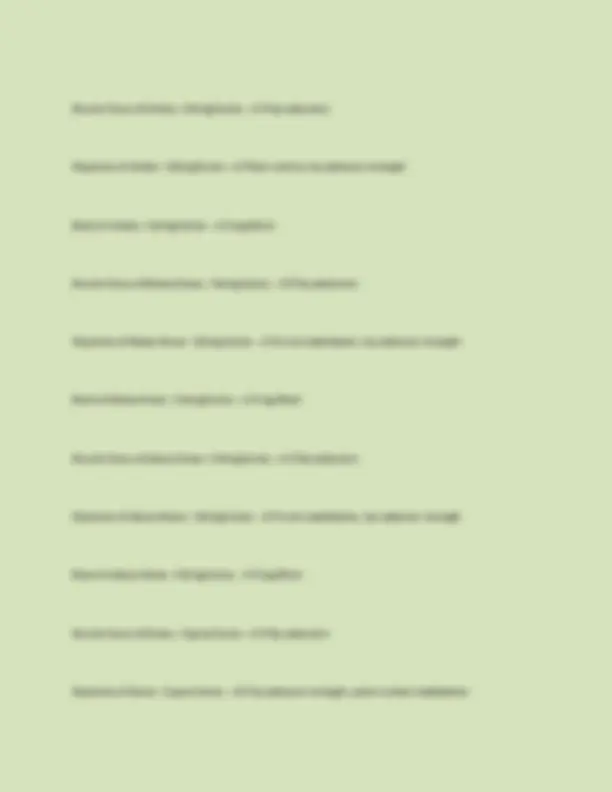
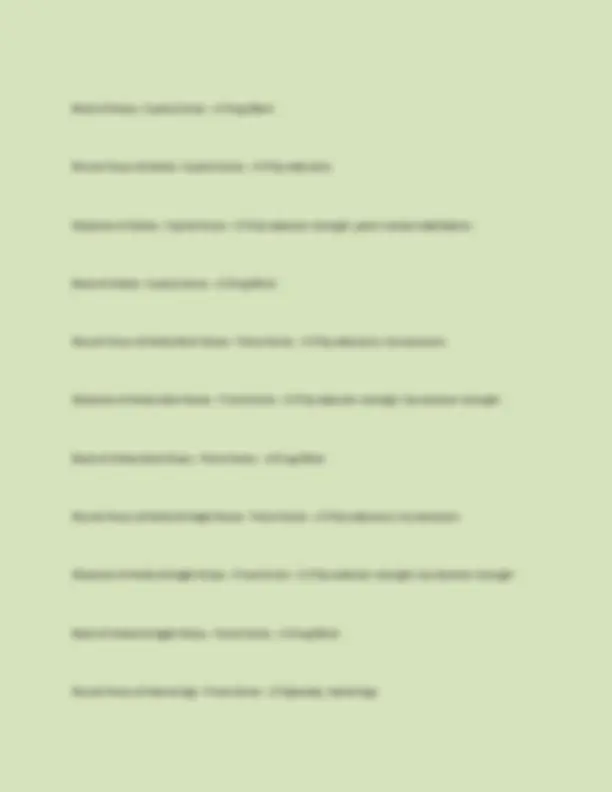
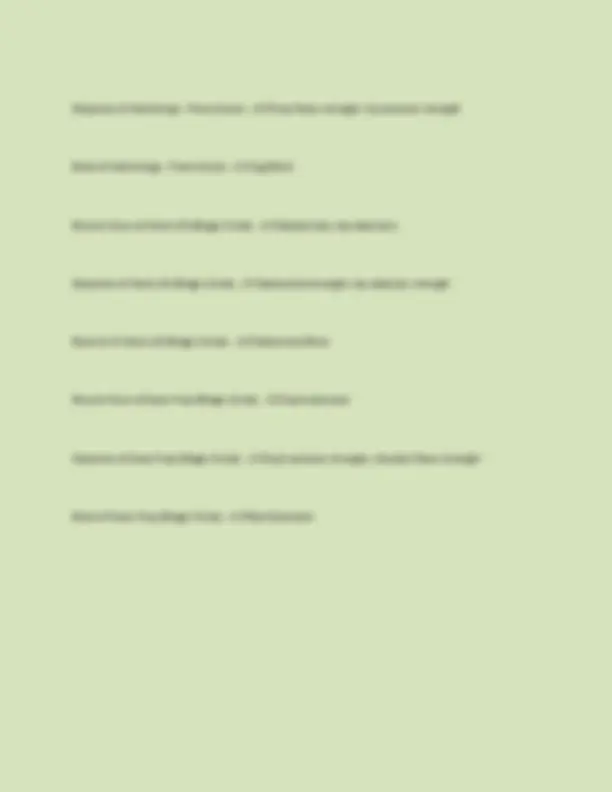


Study with the several resources on Docsity

Earn points by helping other students or get them with a premium plan


Prepare for your exams
Study with the several resources on Docsity

Earn points to download
Earn points by helping other students or get them with a premium plan
Community
Ask the community for help and clear up your study doubts
Discover the best universities in your country according to Docsity users
Free resources
Download our free guides on studying techniques, anxiety management strategies, and thesis advice from Docsity tutors
A comprehensive list of review questions and answers for the basi pilates mat course. It covers key muscle groups, objectives, and principles of pilates exercises, offering valuable insights for students preparing for the course or seeking to deepen their understanding of pilates methodology.
Typology: Exams
1 / 43

This page cannot be seen from the preview
Don't miss anything!




































Muscle focus of Pelvic Curl - ✔✔Abdominals, hamstrings Objective of Pelvic Curl - ✔✔Spinal articulation, hamstring control, pelvic lumbar stabilization Muscle focus of Roll Up - ✔✔Abdominals Objective of Roll Up - ✔✔Abdominal strength, spinal mobility and stability Muscle focus of Spine Twist Supine - ✔✔Obliques Objective of Spine Twist Supine - ✔✔Spinal rotation, pelvic lumbar stabilization, abdominal control with oblique emphasis Muscle focus of Leg Lifts or Leg Changes - ✔✔Abdominals Objective of Leg Lifts or Leg Changes - ✔✔Pelvic lumbar stabilization, hip disassociation Muscle focus of Leg Circles - ✔✔Abdominals
Objective of Leg Circles - ✔✔Pelvic lumbar stabilization, hip disassociations and mobilization Muscle focus of Hundred - ✔✔Abdominals Objective of Hundred - ✔✔Abdominal strength, trunk stabilization Muscle focus of Single Leg Stretch - ✔✔Abdominals Objective of Single Leg Stretch - ✔✔Abdominal strength, trunk stabilization Muscle focus of Criss Cross - ✔✔Obliques Objective of Criss Cross - ✔✔Abdominal strength with oblique emphasis, trunk stabilization Muscle focus of Spine Stretch - ✔✔Abdominals, back extensors Objective of Spine Stretch - ✔✔Spinal articulation, trunk stabilization, hamstring stretch Muscle focus of Saw - ✔✔Obliques Objective of Saw - ✔✔Hamstring stretch, back extensor control, abdominal control with oblique emphasis
Objective of Front Support - ✔✔Trunk stabilization, scapular stabilization Muscle focus of Back Support - ✔✔Shoulder extensors, hip extensors Objective of Back Support - ✔✔Trunk stabilization, shoulder extensor strength, hip extensor strength Muscle focus of Rolling Like A Ball - ✔✔Abdominals Objective of Rolling Like A Ball - ✔✔Trunk stabilization, shoulder stabilization Muscle focus of Chest Lift - ✔✔Abdominals Objective of Chest Lift - ✔✔Abdominal strength, pelvic stability Muscle focus of Chest Lift With Rotation - ✔✔Obliques Objective of Chest Lift With Rotation - ✔✔Abdominal strength with oblique emphasis, pelvic stability Muscle focus of Double Leg Stretch - ✔✔Abdominals Objective of Double Leg Stretch - ✔✔Abdominal strength, trunk stabilization
Muscle focus of Corkscrew - ✔✔Abdominals Objective of Corkscrew - ✔✔Hip flexor control, abdominal strength Muscle focus of Seal Puppy - ✔✔Abdominals Objective of Seal Puppy - ✔✔Trunk stabilization and control, hip joint stretch Muscle focus of Hundred Prep - ✔✔Abdominals Objective of Hundred Prep - ✔✔Abdominal strength, trunk stabilization Muscle focus of Rest Position - ✔✔Relaxation of lower back Objective of Rest Position - ✔✔Relaxation, lumbar spine stretch Knee Extension - ✔✔Quadriceps femoris Knee Flexion - ✔✔Hamstrings Hip Extension - ✔✔Gluteus maximus, hamstrings
Shoulder Extension - ✔✔Latissimus dorsi, teres major, posterior deltoid, pectoralis major sternal portion Shoulder Flexion - ✔✔Pectoralis major clavicular portion, anterior deltoid Internal Rotation of Shoulder - ✔✔Subscapularis, teres major External Rotation of Shoulder - ✔✔Infraspinatus, teres minor Shoulder Abduction - ✔✔Middle deltoid, supraspinatus Shoulder Adduction - ✔✔Pectoralis major, latissimus dorsi Ankle-foot Plantar Flexion - ✔✔Gastrocnemius, soleus Ankle-foot Dorsiflexion - ✔✔Tibialis anterior, extensor digitorum longus Ankle-foot Inversion - ✔✔Tibialis anterior, tibialis posterior Ankle-foot Eversion - ✔✔Peroneus longus, peroneus brevis Head Movements - ✔✔Sternocleidomastoid, scalenes, splenius
Scapula Stabilization and Movement - ✔✔Trapezius, rhomboids, levator scapulae, serratus anterior Pelvic Lumbar Stabilization - ✔✔Transversus abdominis, multifidus, pelvic floor muscles Ten Principles of Pilates - ✔✔Awareness, breath, balance, concentration, center, control, efficiency, flow, harmony, precision Benefits of Lateral or Intercostal Breathing - ✔✔Oxygenate the body, improve circulation, calming effect, encourage concentration, recruit the abs, provide rhythm for movements Axial skeleton - ✔✔Skull, spinal column, sterum, ribs Spinal Column - ✔✔7 cervical vertebrae, 12 thoracic vertebrae, 5 lumbar vertebrae, sacrum, coccyx Upper Extremity of Appendicular Skeleton - ✔✔Clavicle, scapula, humerus, ulna, radius, carpals, metacarpals, phalanges Lower Extremity of Appendicular Skeleton - ✔✔Os coxae (hip), femur, patella, tibia, fibula, tarsals, metatarsals, phalanges Key postural body landmarks - ✔✔ASIS, PS, ischial tuberosity (sit bone), greater trochanter of femur, lateral malleolus of fibula Types of synovial joints - ✔✔Ball and socket, hinge, pivot, gliding, condyloid, saddle
Ball and Socket joint - ✔✔Most freely moving, at the root of limbs Example of ball and socket joint - ✔✔Shoulder, hip Intervertebral joint - ✔✔Gliding joint Acromioclavicular joint - ✔✔Gliding joint but functions as a pivot joint Sternoclavicular joint - ✔✔Gliding joint Shoulder joint - ✔✔Ball and socket joint Elbow joint - ✔✔Hinge joint Wrist joint - ✔✔Condyloid joint Sacroiliac joint - ✔✔Between the ilium and sacrum Hip joint - ✔✔Ball and socket joint Knee joint - ✔✔Hinge joint
Ankle joint - ✔✔Hinge joint Subtalar joint - ✔✔Hinge joint, responsible for inversion and eversion of foot Types of Muscle - ✔✔smooth, cardiac, and skeletal Smooth muscle - ✔✔form the walls of the hollow viscera, such as the stomach and bladder, of various systems of tubes like those found in the circulatory system, the respiratory system, and the reproductive orgrans. The contraction of smooth muscle and cardiac muscle - ✔✔is involuntary. Cardiac muscle - ✔✔is found in the heart and is structurally and functionally similar to both skeletal and smooth muscles. Functional syncytium - ✔✔applies to cardiac muscle which can function as a single unit for contraction. Skeletal muscle - ✔✔is composed of thread-like fibers displaying alternating dark and light bands (striations). Striations - ✔✔are skeletal muscle fibers which are innervated by cranial or spinal nerves. The contraction of skeletal muscle - ✔✔is voluntary.
Slow twitch - ✔✔Type I, red ST - ✔✔tonic muscles Fast twitch - ✔✔Type II, white FT - ✔✔phasic muscles ST fibers - ✔✔are more efficient in maintaining isometric activity and sustained contractions. FT fibers - ✔✔can produce more force but fatigue more easily. Stabilizers - ✔✔tend to be tonic muscles. Movers - ✔✔tend to be phasic muscles. Muscles - ✔✔can be inter-changeable in function. Postural (tonic) muscles - ✔✔tend toward overuse and eventual shortening. Phasic muscles - ✔✔tend towards discuse and weakness.
Agonist - ✔✔principle muscle in a movement. Antagonist - ✔✔opposite muscle in action to the agonist. Synergist - ✔✔a muscle that acts to neutralize an undesired action. Stabilizer or fixator - ✔✔a muscle that anchors or supports a bone or body part. Co-contraction - ✔✔contraction of the agonist and antagonist at the same time to produce a stable joint or balanced movement. Motor unit - ✔✔a motor neuron and the muscle fibers it innervates. All or nothing principle - ✔✔a motor unit will either contract fully or not at all. Motor units with large numbers of fibers - ✔✔are designed for gross force production. Motor units containing a small number of fibers - ✔✔are dsigned for fine control. Isometric contraction - ✔✔contraction of a muscle in a static position, no change in the length of the muscle or the angle of the joint.
Intermediate BASI Warm Up - ✔✔roll up, spince twist supine, double leg stretch, single leg stretch, criss cross Posture can be described - ✔✔in terms of alignment of the joints and body landmarks. Posture can be understood - ✔✔in terms of muscle balance and function. Plumb Line - ✔✔Used to analyze posture relative to "ideal posture" from the side. Posture can be evaluated from - ✔✔the side, and front and back views Symmetry of the body - ✔✔is observed from a front and back view. Good alignment (posture) - ✔✔translates into less stress on the spine and more economical muscluar activity. Deviations of posture - ✔✔will lead to malfunctioning of the inner organs. Points that should fall on the plumb line - ✔✔lobe of ear, cervical vertebra, shoulder joint, midway through trunk, greater trochanter of femur, slightly anterior to the midline of the knee, slightly anterior to the lateral malleolus When viewing a client from the side - ✔✔deviations should be noted in the sagittal plane.
When viewing a client from the front or back - ✔✔deviations should be noted in the coronal or frontal plane. Points that should be analyzed from the front or back - ✔✔head, shoulders, space between the arms and the trunk, pelvis, knees, feet Postural deviations - ✔✔may be structural or functional (learned) Functional postural deviations - ✔✔create muscle imbalances Lumbar hyperlordosis - ✔✔involves an increased lumbar curve of the spine that is commonly accompanied by an anterior tilt of the pelvis. Lumbar hyperlordosis commonly associated with - ✔✔weak abdominals, tigh hip flexors, and tight lower back extensors. Kyphosis - ✔✔involves an increased throracic curve of the spine. Flat Back - ✔✔involves a decrease in the normal degree of curvature in the lumbar spine. Sway Back (Fatigue) - ✔✔characterized by pushing the pelvis forward relative to the plumb line and the thoracic spine, takes little energy to maintain.
PS - ✔✔pubic symphysis Neutral pelvis - ✔✔the ASIS on each side of the pelvis and the PS are in the seam coronal plane and the two ASIS are in the same transverse plane. Posterial pelvic tilt - ✔✔tuck, ASIS is behind the PS Anterior pelvic tilt - ✔✔arch, ASIS is front of the PS Muscles that act on the pelvic complex - ✔✔spinal flexors, pelvic floor, spinal extensors, spinal lateral flexors and rotators, hip flexors, hip extensors, hip adductors, hip abductors, hip external rotators, hip internal rotators Inhalation - ✔✔diaphragm lowers or flattens during contraction and the thoracic cavity enlarges; pressure inside the lungs lowers and air is drawn inside Exhalation - ✔✔diaphragm relaxes and the volume of thoracic cavity is decreases; pressure inside the lungs is higher and air is forced out of the lungs Intercostal breathing - ✔✔emphasizes the lateral expansion of the rib cage; helps maintain abdominal contraction Muscle focus - ✔✔is the muscle or group of muscles that is the primary focus of an exercise
Objective - ✔✔describes that action of the muscle during an exercise Cue - ✔✔relates to the actual execution of an exercise; relate to precision and communicating Stabilizers - ✔✔muscles that stabilize the movement Movers - ✔✔muscles that produce movement Initiator - ✔✔the initial cue or focus of the movment SIM - ✔✔stablize, initiate, move Anatomical position - ✔✔arms at side, thumb and fingers extended, palms facing forward Sagittal plane - ✔✔divides the body into left and right; movement occurs around the cororal axis (flexion and extension) Coronal plane - ✔✔divides the body into front and back; movement occurs around the sagittal axis (abduction and adduction) Anterior - ✔✔front Posterior - ✔✔back